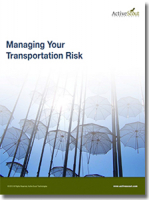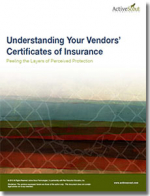Understanding Your Vendors’ Certificates of Insurance
Peeling the Layers of Perceived Protection.
What do they really tell you, and can you rely upon them?
The trend in surface transportation is shifting from long-term contract arrangements to an increased use of the “spot” market by shippers and 3PL’s. Capacity has required shippers and 3PL’s to devote more time to finding available trucks; and the CSA implementation is causing fear, uncertainty and reluctance to using those trucks.
The unknown in this equation is the unknown. The increased use of load boards surfed by unscrupulous truck owners “borrowing” another’s authority has become a major impediment to safe operations and avoidance of cargo theft and vicarious liability.
While some shippers and 3PL’s argue that CSA scores are “optional” selection criteria, the most common mistake in carrier selection is in the area of insurance. Shippers that accept Certificates of Insurance on face value as part of the selection process, without asking the right questions about the terms and conditions behind the certificate, are putting their freight and organization at risk.
Certificates of Insurance are one of the most difficult documents that the stakeholders - certificate holders, shippers, carriers, brokers and forwarders - in a transportation relationship/ transaction encounter. On the one hand, they are produced by insurance agents/brokers who are not a party to the insurance contract; and on the other hand, they do not provide enough substantive and reliable information.
These widely trusted documents are supposed to provide a true and accurate representation of the insured’s coverages approaching the level of a warranty. In fact, their manner of presenting abstracted information makes their value limited.
What’s Related



Favorites





